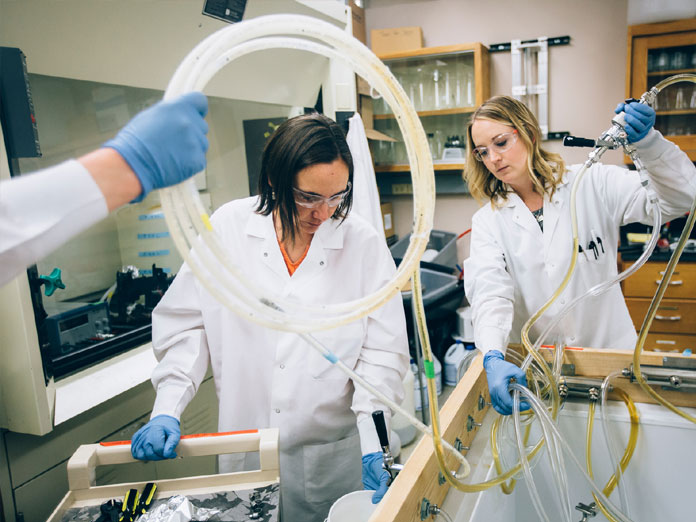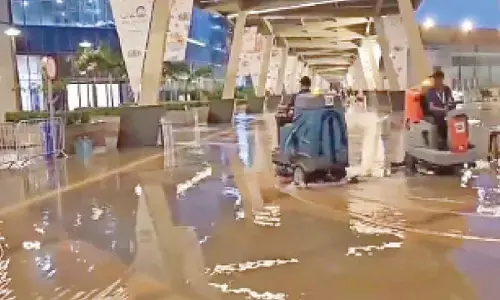Novel filter uses bacterial membrane to clean water

Scientists have designed a novel filtration technology which they say purifies water using bacterial membranes and graphene oxide
Washington: Scientists have designed a novel filtration technology which they say purifies water using bacterial membranes and graphene oxide.
More than one in 10 people in the world lack basic drinking water access, and by 2025, half of the world's population will be living in water-stressed areas, said researchers at the Washington University in the US. The new ultrafiltration membrane purifies water while preventing biofouling or buildup of bacteria and other harmful microorganisms that reduce the flow of water, they said. If the technique is scaled up to a large size, it could benefit many developing countries where clean water is scarce, according to the study published in the journal Environmental Science & Technology.
Biofouling accounts for nearly half of all membrane fouling and is highly challenging to eradicate completely. The researchers previously developed other membranes using gold nanostars, but wanted to design one that used less expensive materials. Their new membrane begins with feeding Gluconacetobacter hansenii bacteria a sugary substance so that they form cellulose nanofibres when in water. The team then incorporated graphene oxide (GO) flakes into the bacterial nanocellulose while it was growing, essentially trapping GO in the membrane to make it stable and durable. After GO is incorporated, the membrane is treated with base solution to kill Gluconacetobacter.
During this process, the oxygen groups of GO are eliminated, making it reduced GO. When the team shone sunlight onto the membrane, the reduced GO flakes immediately generated heat, which is dissipated into the surrounding water and bacteria nanocellulose. The membrane created from bacteria also can kill bacteria, researchers said. "If you want to purify water with microorganisms in it, the reduced graphene oxide in the membrane can absorb the sunlight, heat the membrane and kill the bacteria," said Srikanth Singamaneni, a professor at the Washington University. Singamaneni and colleagues exposed the membrane to E coli bacteria, then shone light on the membrane's surface.
After being irradiated with light for just three minutes, the E coli bacteria died. The team determined that the membrane quickly heated to above the 70 degrees Celsius required to deteriorate the cell walls of E coli bacteria. While the bacteria are killed, the researchers had a pristine membrane with a high quality of nanocellulose fibres that was able to filter water twice as fast as commercially available ultrafiltration membranes under a high operating pressure. When they did the same experiment on a membrane made from bacterial nanocellulose without the reduced GO, the E coli bacteria stayed alive.
"This is like 3D printing with microorganisms. We can add whatever we like to the bacteria nanocellulose during its growth," said Young-Shin Jun, a professor at the Washington University. "We looked at it under different pH conditions similar to what we encounter in the environment, and these membranes are much more stable compared to membranes prepared by vacuum filtration or spin-coating of graphene oxide," Jun said.


















